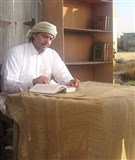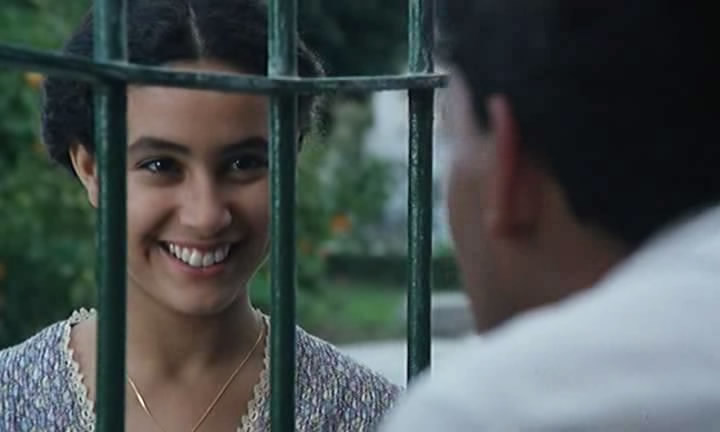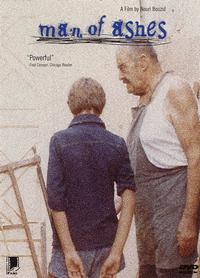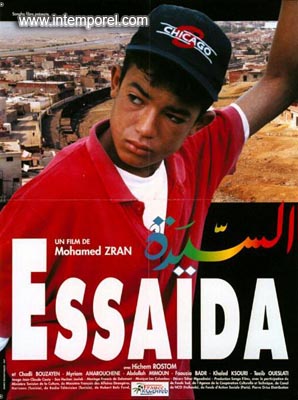Ahmed Sabry Abul-Futuh, Agendat Sayyid al-Ahl. Cairo: Dar El-Ain, 2012.
Thug Revolution
Again, revolutions are not stories. At the same time, societies process and frame events like revolutions by way of narrative. Stories are how we remember past events and how we understand our present moment. They inform how we act, how we strategize, how we get by. Which is to say, to grapple with the Egyptian Revolution means that at some point, we are grappling with stories about revolution. In Egypt, this has been happening since 25 January 2011. Egyptian writers and artists did not wait to begin producing works that take on present history in various ways, and there are now more than a few “revolution novels” on the market, some of which are quite compelling. Among the most notable is a 2012 novel, Sayyid al-Ahl’s Blacklist, by Ahmed Sabry Abul-Futuh, best known for his prize-winning Saraswa quintet.
At the outset, the premise of Blacklist is powerful and blunt. The plot follows an unlucky young man, Rifaa, who finds himself locked up and tortured in the basement jail of a Cairo police station. During his ordeal, he draws up a blacklist of all the people who have wronged him and imagines the revenge he will take. When the Mubarak security regime begins to retreat, he gets his chance. Rifaa is released along with his cellmates on the condition that they help the Central Security Forces put down the rebellion in the street. This, in other words, is the story of the January 25 Uprising as told by baltagiyya (thugs).
The thugs in Blacklist include some of the most vivid characters in contemporary Egyptian fiction. This is a story where it is impossible to tell the cops from the criminals, the jailers from the prisoners, the pious from the profane. The lowlifes, drug dealers and hustlers in the novel come from all sides of the law, and from the top and bottom of the social order. The ones behind bars are not the worst, just the unluckiest. In this sense, the novel offers a trenchant critique of the final days of the Mubarak regime—a period whose crimes have yet to be fully counted, let along prosecuted.
The resemblance between Rifaa and Khaled Said is not accidental. Rifaa is a law school dropout, drawn to drug dealing and police informing through a combination of bad circumstances and bad decisions. A local drug kingpin, Safwat Bayoumi, keeps Rifaa in the game, but at a price. Bayoumi in turn has serious backing from the Muslim Brotherhood, and is protected by officers in the Ministry of Interior. After crossing the wrong people, Rifaa finds himself locked up and tortured by Bayoumi’s business partners in the police. It is during these horrific torture scenes that Rifaa draws up his blacklist. Besides the police officers and their criminal associates , it also includes a local Salafi preacher who abducted and married his underage sister.
As the uprising breaks out, Rifaa and his cellmates listen to the demonstrations on the streets above. The station itself goes quiet as policemen abandon their posts. But soon they are dragooned into service for the Ministry of the Interior by the very men who have been tormenting them. Given cheap clothes and cheap drugs, they are dispatched to wreak havoc at shopping malls and later in Abdel Monem Riyad Square. Rifaa uses the confusion to visit his family and plan his revenge, starting with his chief tormentor, Magdy al-Husseiny, a high-ranking police officer known for his cruelty. The assassination plot goes awry and at one point involves a high-speed motorcycle chase with infant in tow. As the plans go awry, Rifaa begins to act desperate. His attempts to kill other officers lead him from Madinat Nasr to Zamalek, from success to failure and back again. Throughout, Rifaa plays a rough cat-and-mouse game against a police force that is itself in the process of crumbling.
Writing about the revolution through the lens of counter-revolution, crime and revenge is a brilliant choice, and Blacklist exploits it often. Police violence, official corruption, grinding poverty, and a crumbling social fabric—these were not only the most immediate initial causes of the Egyptian uprising, they are also key features of crime writing as a genre,. The first chapters promise a potboiler plot with compelling characters and situations. If Abul-Futuh had remained committed to the conventions of crime and noir, this could have been a breakout work of genre fiction in Arabic — a genuine revolutionary thriller with echoes of Ahmad Murad’s Vertigo.
But halfway through Blacklist, the plot takes a turn and the revenge-thriller plot transforms into a “boy-meets-girl and joins the Revolution” sort of story. As the police intensify their hunt for Rifaa, he is forced to rely on his girlfriend, Sofeya, for help. When Rifaa and Sofeya are reunited, the novel turns toward the familiar but sometimes baffling conventions of Egyptian melodrama romance.
Sofeya is an educated young woman who waits patiently, beyond all hope, for Rifaa’s release. She is a youth activist, involved in planning the 25 January Uprising. Her virtue and strength are unimpeachable. She is, in other words, more convention and symbol than human. Readers will instantly recognize her as a new rendition of that old nationalist icon, “Egypt as woman.” [1] Sofeya/Egypt urges Rifaa to give up his blacklist and join the revolution in Midan Tahrir. The blacklist, she argues, represents a petty and private desire for retribution. The revolution, she asserts, embodies a more mature and collective sense of justice.
Rifaa joins the Revolution. He marries Sofeya/Egypt in the Midan itself. However, Rifaa preposterously also continues on as a baltagi, since this allows him to keep the people on his blacklist nearby. This struggle leads to some of the most improbable moments of the novel. The novel ends on February 2, with events from “the Battle of the Camel” in the background. Rifaa stands fast in Midan Tahrir before rejoining his baltagiyya cohort in Midan Abdel Monem Riyad. The day does not end well and the revolution-marriage plotline turns tragic. In the end, not even the all-accepting love embrace of Midan Tahrir can save Rifaa from the eye-for-an-eye consequences of the revenge plot.
Revolution and Genre
For more than eighty years, Egyptian novelists have been writing about Egyptian revolutions. If we look back on this history of Egyptian novels, we find something interesting, namely that revolution has been emplotted — that is, set into narrative form according to genre conventions — in a number of ways.
For instance, as many critics have noted, Awdat al-Ruh, Tawfiq al-Hakim’s 1933 novel of the 1919 revolution is a Bildungsroman, the story of a young man’s education. Drawing on Hayden White, we can also say that the basic form of the revolutionary tale is that of romance, which is to say, a “drama of self-identification symbolized by the hero’s transcendence of the world of experience, his victory over it, and his final liberation from it.” [2] At the end, Hakim’s protagonist, is free though he remains in prison.
Contrast this with Naguib Mahfouz’s Bayn al-Qasrayn, published first in the pages of al-Risala al-Jadida in 1954, which tells the story of the same 1919 Revolution. Mahfouz’s novel moves according to a very different plotline and ends with the story of the fall of father and son. This ending suggests that we are in the realm of tragedy, in which, according to White again, “there are no festive occasions, except false and illusory ones [and] intimations of states of division among men more terrible than that which incited the tragic agon at the beginning of the drama. Still, the fall of the protoganist and the shaking of the world he inhabits which occur at the end of the Tragic play are not regarded as totally threatening to those who survive the agonistic test. There has been a gain in consciousness for the spectators.” [2] This gain of sad knowledge is what Mahfouz explores in the two other novels of the Cairo Trilogy.
Ibrahim Aslan’s novel, Malik al-Hazin, tells the story of the 1977 Bread Uprising, a popular revolt that came to have a mythical meaning as a near-revolution. The novel tells a very different tale about revolution, however, gathering together a vast number of characters—more than one hundred total—in a carnivalesque of revolt. Some of the characters in the novel are best friends, others are declared enemies—but no matter, Aslan pitches them into a series of fights against each other for the better part of the novel. The intifada that erupts does not resolve these fights so much as redirect them. For a few hours at the end of a long day, the characters join forces to fight the state. The battle becomes a party, the participants laughing and joking. For one evening, the conflicts between owners, renters and employees are forgotten, as are those between cheats and dupes, adulterers and cuckolds, police and criminals. In other words, Aslan narrates the uprising as a comedy. What distinguishes the comedic mode of emplotment in the novel is its ability to stage multiple conflicts and points of difference not so as to resolve or flatten them, but to suggest that they might be reconciled in laughter, even if only for a moment. Again, to draw upon White, “In Comedy, hope is held out for the temporary triumph of man over his world by the prospect of occasional reconciliations of the forces at play in the social and natural worlds.” [3]
It is true that genre criticism has fallen out of fashion in academic circles. Nonetheless, genre categories, however imperfect, allow us to appreciate Abul-Futuh’s novel’s place in this long tradition of Egyptian revolution novels. Following White, if we take the romance plot to be in essence the story of quest—of overcoming—then we can begin to recognize that what Blacklist does is stage a collision between two strands of romance, two narratives of overcoming. On the one hand, the revenge-thriller plot is a kind of romance where the protagonist has to overcome all sorts of worldly obstacles as he personally seeks to right the wrongs in the world around him. On the other, the love story narrates the journey of the protagonist as he overcomes the considerable affective obstacles he faces before he can be reunited, then united in marriage, with his beloved. On the one hand, the distopic tale of Midan Abdel Monem Riyad. On the other, the utopic tale of Midan Tahrir.
Blacklist pits these two romance narratives about revolution — these two tales of overcoming — against one another. The first tells a story of revolution as retribution, the second tells a story of revolution as reunion and union, of forgiveness, of love. The first, of revolution as an act of whereby the oppressed switch places with their oppressors. The second, of revolution as the collective emancipation of men in the arms of women, although it must be noted, not an actual women, but the iconic “mother Egypt” type. Again, we return to the two senses of the word “revolution” — one hinting that only repetition is possible, the other, suggesting the possibility of a break with the past and also new beginnings.
The success of Abul-Futuh’s genre mash-up is that it makes the moral distinction between the two forms of narrative relatively sharp: one narrative of revolution suggests that another world is possible, the other says it is not. As in fiction, so too the real world. Both narratives of revolution were being told from the first hours of 25 January, with some insisting that a break was possible, others more skeptical, still others dismissive. The differences between these two ways of narrating revolution are more pronounced today than they were a month ago.
Genre and Gender
In the end, Blacklist commits to the assertion that another world is possible. But what does it mean to articulate the tale of revolutionary overcoming as a tale of a boy and a girl in the midan? Here the gendered limitations of this way of narrating revolution are glaring. The form of liberation it offers is one that is pure convention — where subjectivity is imagined as masculine, desires as heterosexual, and communion as sacred matrimony. While the global press took delight in the handful of actual marriages that took place in Midan Tahrir during the 18 Days, the utopic commitments and aspirations of activists were far broader, more expansive and more inclusive than those of the matrimony story. This fact is underscored in the accounts of revolutionaries whose theories and practices of the collective have very little to do with the idea of a man marrying a woman.
Since Blacklist hugs so closely to the well-trodden grooves of the “national romance”, we might conclude by recalling two of the problems that attend this genre. [5] First, it depicts women not as participants and actors making history, but rather as figures standing on the sidelines of struggle or as trophies for the victor. Indeed, this is the story of Rifaa’s struggle to liberate himself, not Sofeya’s. These shortcomings are disappointing since they mark a failure to imagine the possibility of women making revolution.
But there is a second problem whose features are more troubling. The national romance figures women as objects of heterosexual desire and channels that desire toward received patriarchal categories like virtue, honor and propriety. By depicting women’s bodies as sites of moral value and by refusing to conceive of women as actors in political events, the national romance participates in a familiar pathologizing discourse where women figure as the objects of acts and also as objects of blame for those same acts. In the context of sexual violence against women in the revolutionary public square, this is tantamount to more than a failure of imagination. Equally important, by choosing to narrate revolution in this way, the romance genre suggests that sexual violence against women has a purely moral rather than political meaning.
No one would argue that national romance is a cause of sexual assault against women in revolutionary Egypt. But it is a privileged discursive site where violence against women is first separated from the category of the political then marginalized as aberration and deviation. Yet, given that the same social element—the mass crowd—is both what produces revolution and also the public assault of women, these categorical separations between crime and politics are suspect. The point is not just that a romance like Blacklist fails to adequately reflect the gendered complexity of the Egyptian revolution. It is also that the genre participates wholeheartedly in a broader social discourse that attempts to explain away the exceptionally violent punishments meted out to women who dare to participate in revolution. To grapple with the shortcomings of an otherwise compelling novel like Blacklist, one needs to acknowledge the deep constraints of genre forms, especially those of the national romance. To do so means beginning to imagine in other ways. Another story is possible.
Footnotes
1. The term “Egypt as woman” is from Beth Baron, Egypt as a Woman: Nationalism, Gender, and Politics (Berkeley: University of California Press, 2005).
2. Hayden White, Metahistory: The Historical Imagination in Nineteenth-Century Europe (Baltimore: The Johns Hopkins University Press, 1973), 8.
3. Ibid., 9.
4. Ibid., 9.
5. Blacklist is by no means the only national romance of the revolution. See also: Yousry Nasrallah’s film Ba‘d al-mawqa‘a (2012) and Mohamed Hesham Ebia and Hanan Al-Karargy’s graphic novel 18 Yawman (Cairo: Comics Li-l-Nashr, 2011).
![[Ahmed Sabry Abul-Futuh`s \"Sayyid al-Ahl`s Blacklist\"]](https://kms.jadaliyya.com/Images/357x383xo/Abul-Futuh-Cover.jpg)






















